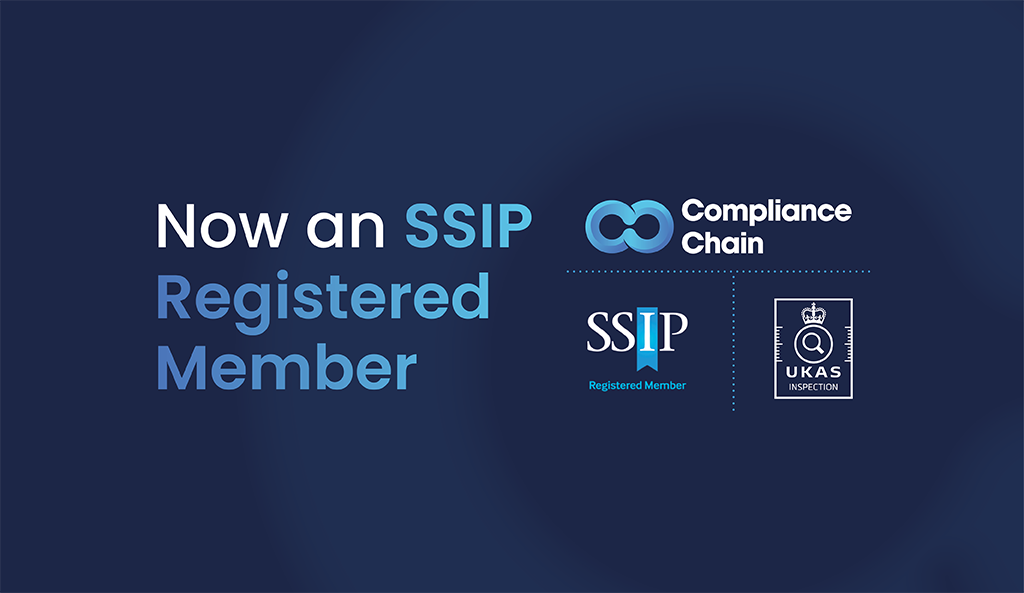Construction risk management refers to the numerous activities that are associated with combating the financial, safety, and logistic challenges that often come with operating a construction company.
Risk management is the process of identifying potential hazards that could potentially impact both construction projects, and your company as a whole.
Managing risks is important in construction projects – especially in terms of health and safety, with 45 fatal injuries reported from 2022 to 2023.
To find out more information about risk management in construction projects, and how Compliance Chain can help to mitigate risks and ensure compliance, continue reading our guide.
What is Construction Risk Management?
Having a clear understanding of what construction risk management is and what the process entails is vital. Essentially, construction risk management involves determining the risks that are present in your business.
Risk planning is a must when it comes to enforcing risk management. Typically, risk planning records how risks will be:
- Evaluated
- Controlled
- Reviewed
- Reported
Risk management involves creating procedures to minimise their impact on both your business and projects. While all possible risks should be dealt with accordingly, high-impact risks should take priority.
Managing these risks takes time and money, but must be managed effectively. Spending time analysing these potential risks and basing the probability of them becoming reality is crucial.
Risks can vary, whether they be financial risk, environmental, or technical, to name a few. Some of the main risk factors that impact the construction industry include construction delays, energy/ service interruptions, raw material shortages, and logistics and warehousing shortages.
The overall goal of construction risk management is to identify these risks and assess how they could potentially impact project budget and safety.
Strategies should be put in place to eliminate any identified risks. When you enforce new safety risk protocols, you can get ahead of these risks. Risks should be managed throughout project cycles.
Throughout project cycles, it’s common for management plans to be adjusted to address circumstances effectively.
Many benefits come with implementing risk management strategies; these new strategies help enhance the ability of construction companies to deliver projects on time while complying with quality standards and ensuring safety at all times.
Who Is Involved in Construction Risk Management?
Effective risk management allows companies to be able to accurately identify potential hazards. Identifying alternative actions to take is crucial, but who’s involved in the construction risk management process?
Appointing both accountability and responsibility for certain hazards means that potential risks can be controlled effectively. From project managers to clients, someone should be responsible for each risk.
All the hard work of identifying hazards and evaluating their potential to cause detriment to your project will be for nothing if you don’t assign someone to oversee these risks. Think about who should be responsible for each hazard, and why.
Someone might be more experienced in a specific risk, meaning they’re best suited to oversee it. Project managers should own any risks that could affect project delivery. These could include risks that could affect project schedules and timeframes.
Project managers are there to oversee daily operations regarding projects; it’s their job to manage resources while ensuring the project remains on schedule and within the set budget.
Although risk management is a key part of their job role, managers should still discuss any updates on risk at every level with different stakeholders. While clients and project managers take on risks, so do design professionals involved in projects.
Both architects and engineers play a vital role in mitigating design-related risks. They’re responsible for project design and complying with regulations. Additionally, design specialists should ensure that they raise any design-related issues that occur.
Contractors should execute construction site work while taking project plans and specifications into account. Any construction-related risks, including labour issues or safety hazards, should be managed by contractors.
The Risk Management Process
The project risk management process involves identifying, analysing, and responding to hazards that arise throughout the life cycle of a project.
From risk identification to documenting any vital information regarding potential hazards or positive risks, this crucial process should be followed accordingly to ensure hazards can be dealt with correctly. Let’s take a look at what’s typically involved in the risk management process.
1 – Risk Identification
One of the most important steps within the risk management process is risk identification. This initial stage in the process involves identifying anything that could negatively impact the objectives of your project. It’s important to collect any data that you’ve found in a risk register.
Although identifying potential risks is the main point of this stage, it also allows you to identify any positive opportunities for the project, too. For a risk to be valid, you must assess the characteristics of the risk by detailing the consequences and a mitigation plan.
Both risks and opportunities identified during this stage should be as specific as possible. The titles of these identified risks should not only be clearly identified but also self-explanatory.
Usually, it’s on the project manager to ensure that formal procedures for identifying risks and creating plans are carried out via communication with various risk owners.
2 – Risk Analysis
Creating a risk assessment can take some time, but once you’ve identified them, you can focus on assessing their likelihood of causing an impact on project objectives. Typically, this stage involves quantifying risks using available tools.
Risk registers, impact effort matrixes, and various risk-scoring techniques can be utilised to help assess risk probability. There are two types of risk assessments; qualitative risk assessment, and quantitative risk assessment.
3 – Risk Evaluation
During risk evaluation, you’ll need to compare the results you obtained from the previous stage of risk analysis. Completing a risk evaluation involves making comparisons to your organisation’s existing risk criteria.
By doing so, you can determine whether or not you need to do more to accurately deal with the risks you’re assessing.
Consider implementing new risk treatments, spending time evaluating your current objectives or returning to the previous stage of risk management if you feel as though you need to develop a more thorough understanding of the potential risks at hand.
4 – Risk Treatment
After completing the initial stage of risk management, turning your attention to risk treatment is key.
Risk treatment requires some brain power; essentially, it’s the process of considering, selecting, and implementing various options to address the risks that you’ve been assessing accurately.
Implementing new strategies is vital to helping reduce the likelihood of potential risks impacting the project.
5 – Risk Monitoring and Control
For treatment plans to work, they’ll need to be monitored closely, as well as be reported on. How frequently you need to monitor and report potential risks varies, often depending on how critical these risks are.
By putting a monitoring and reporting structure in place, you’re allowing a better chance of being able to minimise risk escalation while ensuring that appropriate risk responses are actioned accordingly.
6 – Documentation
The documentation stage of risk management is critical. Documenting, recording, and maintaining key information concerning risks, treatment plans, and important mitigation actions is vital.
A risk register is the main document used to record any risks that have been identified, whereas risk assessment reports document the results of risk analysis activities. Among these, treatment plans should be documented, including clear information on strategies in place to mitigate and manage risks.
The Benefits of Risk Management in Construction
Many benefits come with risk management in construction. Creating a risk management plan (RMP) ensures the safety and overall well-being of employees.
Identifying risks and dealing with them promptly means you’ll be improving the company’s reputation while avoiding any potential costs associated with accidents.
Mitigate Risks and Improve Safety
Risk management allows you to deal with risk in construction swiftly, helping prevent any injuries while working towards project timelines.
Having a risk management plan in place empowers companies to address any potential risks, whether they be big or small. Mitigating such risks minimises any issues occurring in the near future, and allows your projects to go ahead safely.
Boost Profits
Risk management involves identifying risks that could impact your business. By protecting your business, and preventing these risks early on, you’ll be saving costs for the company.
Mitigating potential risks in the early stages ensures that delays can be addressed promptly and completion can be reached without having to pay any penalties for late project delivery. Mitigating risks reduces the likelihood of having to deal with often costly legal issues and insurance claims, to name a few.
Utilise Compliance Chain’s Software Solutions Today
At Compliance Chain, we can mitigate risks and ensure compliance within the construction industry.
To mitigate risks in your supply chain, we ensure compliance by monitoring all suppliers on factors such as accreditations, insurance, compliance and Delphi score. Our software can give you an overall risk review score, making it easier than ever to assess the risk with potential suppliers.
In addition, our project management solution gives you full oversight of your projects, allowing you to map out delivery programmes, and monitor key performance indicators such as; time management, cost management, fair payment, safety management and sustainability.
You can input your project’s data and start reducing the risks associated with your projects while ensuring your delivery runs smoothly. To find out more, get in touch with a member of the Compliance Chain team today.

As the Head of Operations at Compliance Chain, Adam’s role is integral to enhancing our operational efficiency and ensuring our software solutions meet the pinnacle of quality and effectiveness.


